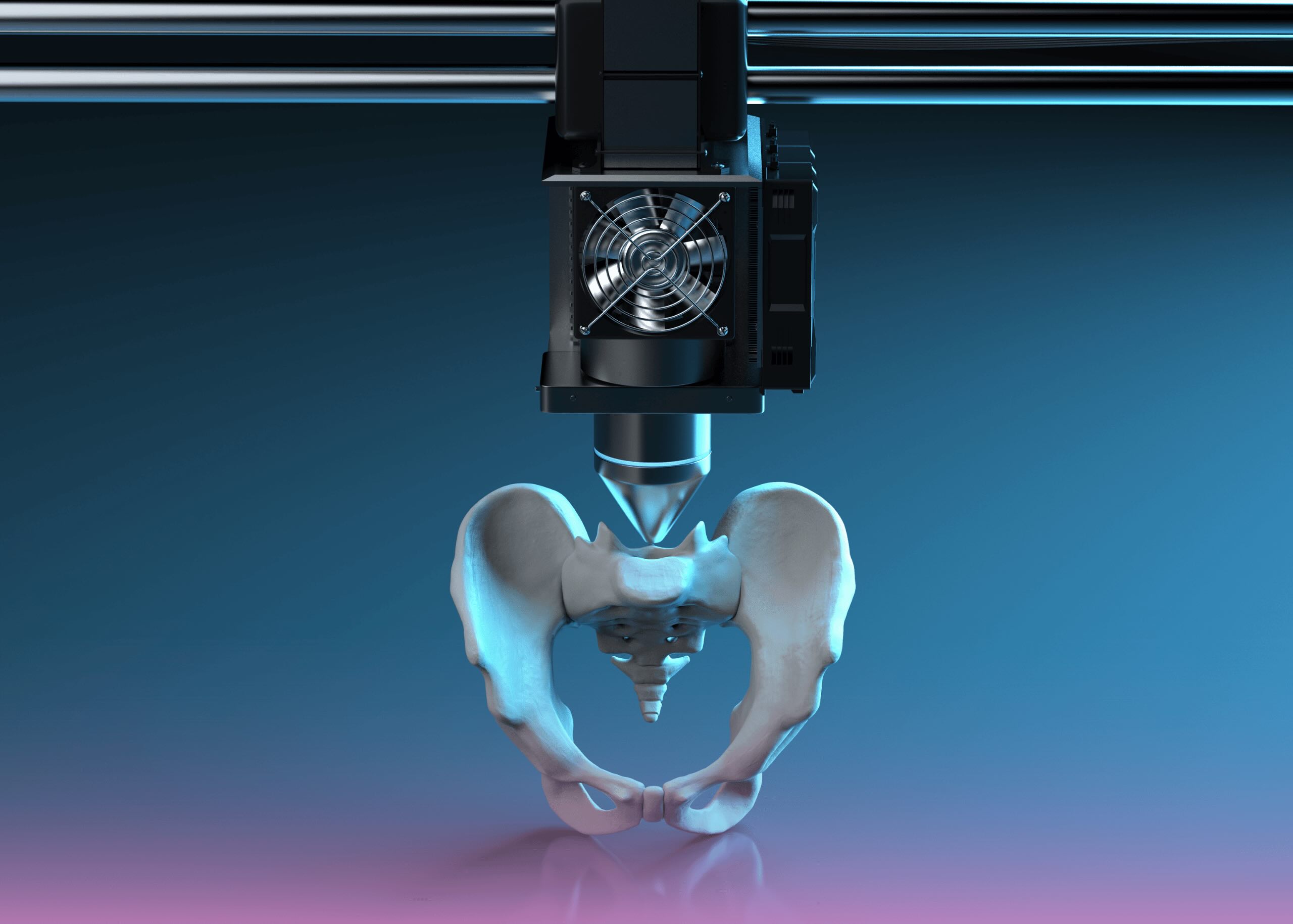Introduction
Burjeel Hospital Abu Dhabi has successfully performed a groundbreaking hip revision surgery utilizing custom-designed 3D-printed implants, offering new hope for patients with severe pelvic bone loss. This case demonstrates how advanced imaging, collaborative biomedical engineering, and surgical expertise can transform seemingly impossible cases into successful outcomes, even after previous implant failures.
Patient History
The patient had undergone a fully cemented left hip replacement more than a decade ago outside the UAE. Six months prior to the current intervention, the patient was diagnosed with a left periprosthetic infection in the UAE. In July 2024, the infected total hip replacement was explanted, and the patient was left with static antibiotic-loaded spacers in a disarticulated hanging hip configuration due to the severity of bone stock loss, which made implantation of a traditional hip spacer impossible. An X-ray guided hip needle aspiration for culture in October 2024 confirmed that the infection had been successfully eliminated.
Complex Challenges
The surgical team, led by Dr. Gianluca Cusma, Consultant Trauma and Orthopedic Surgeon at Burjeel Hospital Abu Dhabi, faced an exceptionally challenging case:
- Severe Bone Loss: Imaging studies revealed catastrophic bone deficiencies:
- Complete deficiency of the medial wall
- Partial deficiency of the posterior wall
- Complete deficiency of the superior wall
- Complete resorption of the greater trochanter
- Classification: The condition was classified as Paprosky 3B pelvic bone loss, representing one of the most severe scenarios in revision hip arthroplasty.
- Functional Limitations: The patient had been in a disarticulated state for five months, resulting in significant soft tissue adaptations, muscle damage, and limb shortening.
Innovative Solution
The management approach required innovative solutions customized specifically to this patient’s unique anatomy:
- Custom Implant Design: In collaboration with specialized biomedical engineers, the team designed a CT-based custom-made acetabular component. The process involved:
- Detailed 3D reconstruction of the remaining bone anatomy
- Digital design of a tri-flanged component
- Selection of 3D-printed trabecular titanium material to promote bone ingrowth
- Engineering of flanges positioned to secure to the remaining viable bone
- Integration of features to reconstruct the medial wall separating the acetabular cavity from the abdominal cavity
- Manufacturing Process: The design-to-delivery process took approximately four weeks, culminating in the receipt of a sterile, patient-specific implant.
Surgical Procedure
Under spinal anesthesia provided by Anesthesia Specialist, Dr. Srinivas Boddupally, Dr. Cusma, performed the complex revision hip replacement:
- Acetabular Reconstruction: The custom-made cementless acetabular component was precisely positioned to engage with the remaining bone structure.
- Femoral Reconstruction: A cementless off-the-shelf conical stem was implanted to provide stable femoral fixation.
- Articulation System: The surgeon selected a dual mobility ceramic-on-polyethylene tribology system to enhance stability while minimizing wear.
Postoperative Course and Recovery
The patient experienced an excellent immediate postoperative recovery:
- Neurovascular status remained intact
- No blood transfusions were required
- The surgical wound healed well
- Daily physiotherapy focused on regaining active hip flexion/extension control
- The patient achieved comfortable positional transfers and in-room ambulation
- Discharge occurred on the fifth postoperative day
Technical and Emotional Challenges
This case highlighted several critical challenges in complex revision hip surgery:
- Technical Challenges:
- Designing a custom implant that would integrate with severely compromised bone
- Executing precise surgical exposure and preparation for the implant
- Managing damaged soft tissues and muscles
- Establishing appropriate limb length and tension to balance hip stability and gait after prolonged disarticulation
- Psychological Aspects:
- Managing the patient’s emotions and expectations throughout the process
- Providing confidence in a positive outcome despite the extreme complexity
Conclusion
This case exemplifies Burjeel Hospital Abu Dhabi’s capability to tackle exceptionally complex orthopedic challenges through innovative approaches and multidisciplinary collaboration. By combining advanced imaging, custom 3D-printed implant technology, and skilled surgical technique, the team successfully restored hip function in a case that would have been deemed inoperable using conventional methods. This approach represents the cutting edge of orthopedic reconstruction and offers new possibilities for patients with severe bone loss following failed arthroplasty.


